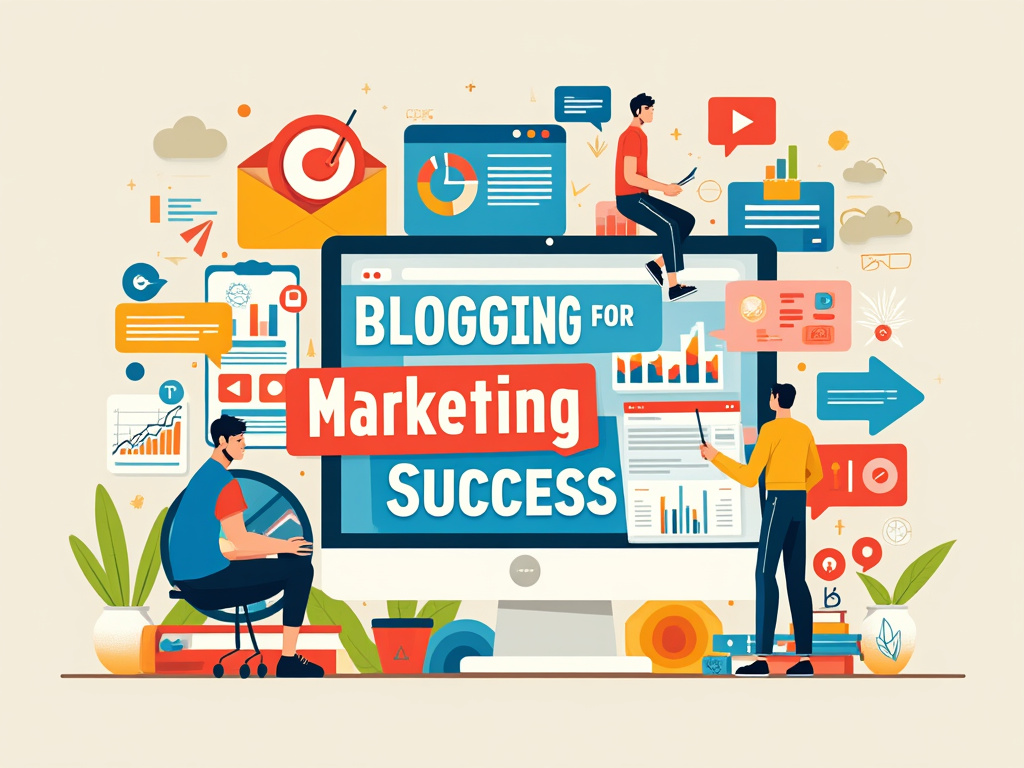Guide to Blogging for Marketing Success

Blogging has emerged as one of the most powerful strategies for e-store owners looking to enhance their online presence, attract new customers, and ultimately drive sales. However, embarking on a blogging journey should go beyond simply putting pen to paper. It requires a strategic approach that aligns with your marketing goals and resonates with your audience. Here’s your guide to transforming your blog into a marketing powerhouse.
Understanding Your Audience
Before you start typing away, take a moment to think about who you are writing for. Understanding your audience is crucial in creating content that they will find valuable and engaging.
* Conduct market research to identify your target demographics.
- Engage with your customers directly via social media or surveys to gather insights into their interests and pain points.
- Use analytics tools to review existing data from your website to see what topics have already garnered attention.
By knowing your audience, you can tailor your blog topics to resonate with their needs, helping you build stronger connections with potential customers.
Keyword Research and SEO
Once you’ve identified your audience, it’s time to dive into keyword research. SEO is central to blog success as it guides your content strategy. Here are key steps to take:
* Utilize tools like Google Keyword Planner or SEMrush to find relevant keywords for your niche.
- Analyze the search intent behind those keywords. Are people looking for how-tos, product reviews, or general information?
- Incorporate these keywords thoughtfully within your blog posts—think titles, headers, and body content, but avoid keyword stuffing.
Effective use of keywords not only improves your blog’s visibility in search results but also drives more qualified traffic to your e-store.
Creating Valuable Content
Your blog should serve as a resource that provides valuable information for your readers. The content you offer can come in various formats, including:
* Informative guides and how-tos that offer step-by-step instructions.
- Customer stories or testimonials that create credibility and showcase real-life uses of your products.
- Industry news and trends that position you as an expert in your niche.
To keep readers coming back, ensure your content is unique, engaging, and free from fluff. Use visuals—a great image or infographic can break up text and capture attention effectively.
Promoting Your Blog
Creating incredible content is just the beginning. If no one sees it, it won’t do much good for your marketing efforts. Here are ways to get your blog in front of more eyes:
* Share blog posts on your e-store’s social media channels, encouraging followers to engage with the content.
- Utilize email marketing through platforms like Incomaker. Craft newsletters that highlight recent blog posts, enticing recipients to click through to your site.
- Collaborate with influencers or guest bloggers in your niche to tap into their audience and gain more exposure.
By promoting your blog effectively, you not only increase its reach but also drive traffic back to your e-store.
Building Email Lists
One of the core advantages of blogging lies in its ability to facilitate list-building. Creating compelling lead magnets—like eBooks, free trials, or exclusive discounts—related to your blog content can entice readers to subscribe to your mailing list.
* Ensure sign-up forms are easily accessible on your blog.
- Offer incentives for subscribing, like exclusive content or a discount on their first order.
- Use segmentation in your email marketing campaigns to send personalized messages to your subscribers, increasing engagement.
With tools like Incomaker, automating follow-up emails based on user interactions can foster loyalty and encourage repeat visits to your e-store.
Consistency is Key
An effective blogging strategy thrives on consistency. Set a manageable posting schedule—be it weekly, bi-weekly, or monthly—and stick to it. Regular posts keep your blog fresh and your audience engaged.
* Use a content calendar to plan out themes and post ideas in advance.
- Monitor blog performance regularly to assess what resonates most with your audience, and adjust your strategy accordingly.
By consistently providing valuable content, you are more likely to establish authority in your niche and create a loyal readership.
Measuring Success
To truly know how well your blog is performing, you need to track and measure its impact on your overall marketing goals.
* Use Google Analytics to monitor traffic sources, user engagement, and conversion metrics.
- Look at which blog posts are driving the most sales and replicate that success in your future content.
- Periodically review your email campaigns through Incomaker, analyzing open rates and click-through rates to gauge customer interest and engagement.
By keeping an eye on your metrics, you can fine-tune your blogging strategy to ensure it’s not just filling pages but actively contributing to your marketing goals.
Navigating the world of blogging for your e-store can feel overwhelming, but with a focus on understanding your audience, crafting valuable content, and promoting effectively, you can harness its power. Embrace this journey, and watch as your blog becomes more than just a digital journal—it will become the heart of your marketing efforts.



